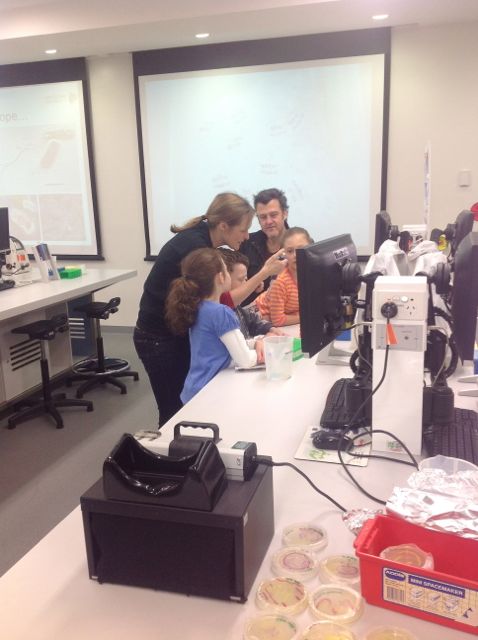Team:Macquarie Australia/Openday
From 2012.igem.org
Elleworgan (Talk | contribs) |
Elleworgan (Talk | contribs) |
||
| Line 22: | Line 22: | ||
</p> | </p> | ||
<p> | <p> | ||
| + | <h2>The Lego of Life</h2> | ||
| + | </p> | ||
| + | <p> | ||
| + | We included a station where younger children (or anyone who was interested!) could explore the concept of genes using Lego® blocks. This activity compared genes to Lego® bricks, and a poster (as shown below) explained that the infinite possible combinations that can be produced from a collection of these pieces can be viewed as a model for the infinite combinations of genetic information that are possible in nature and in synthetic biology. | ||
| + | |||
</html> | </html> | ||
{{MQgalleryopen}} | {{MQgalleryopen}} | ||
Revision as of 01:32, 24 September 2012
Open Day
The Macquarie University Open Day on September 8 gave us an excellent opportunity to raise awareness of our project in the wider community. To take advantage of this, we developed an interactive exhibit where members of the public could learn about what we are seeking to do. We also aimed to challenge any negative connotations held by members of the public about synthetic biology and gene cloning, and the applications of these techniques.
We identified three main groups who would be our likely audience:
1. Senior high school students who were considering Macquarie University for tertiary study;
2. Parents and adult members of the public who were accompanying their children or considering postgraduate study;
3. Younger children who were accompanying family members.
In order to communicate effectively with each of these groups, we coordinated a range of activities that served to educate our audience about the field of synthetic biology and our project in particular.
The Lego of Life
We included a station where younger children (or anyone who was interested!) could explore the concept of genes using Lego® blocks. This activity compared genes to Lego® bricks, and a poster (as shown below) explained that the infinite possible combinations that can be produced from a collection of these pieces can be viewed as a model for the infinite combinations of genetic information that are possible in nature and in synthetic biology.







 "
"




